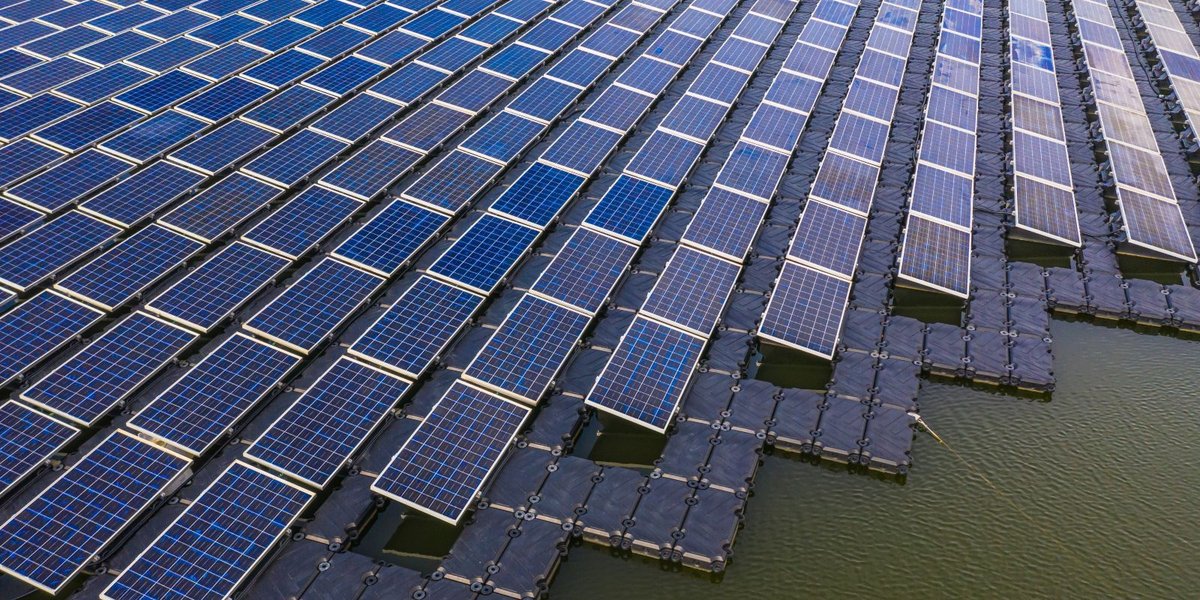FORT BRAGG SOLAR ARRAY HELPS FIGHT CLIMATE CHANGE
By Buddy Blouin

Advertisement
Climate change continues to be an important issue for the U.S. Armed Forces, and this time, Fort Bragg is doing something about it. Floating solar panels can now be found on Big Muddy Lake, and this largest floating solar array in the Southeast United States is going to help the base give Camp Mackall backup power during times of need.
More news from Fort Bragg: The Baffling Case Around the Death of Enrique Roman-Martinez
What Is a Solar Array?
The solar array definition provided by Sunrun, the top home solar company in the U.S., states that an array is when you combine multiple solar panels together. It’s often a term used to describe the size of the solar panels being installed on a home or building. In the case of Fort Bragg, the solar array will be a 1.1-megawatt array, featuring a two-megawatt-hour battery energy storage system. You’ll find the floating solar farm on Big Muddy Lake at Camp Mackall. Estimates suggest that one megawatt-hour of solar photovoltaic can power as many as 120 homes. “This project fulfills the commitment made in our Army Climate Strategy to increase resilience while delivering clean energy and reducing greenhouse gas emissions,” said Rachel Jacobson, the Assistant Secretary of the Army for Installations, Energy and Environment.Climate Change Continues To Be a Hot Topic for the DoD
Solar arrays are a carbon-free power generation method that fits into the overall goals of the Department of Defense (DoD) in regard to climate change. The Department of Defense 2021 Climate Adaptation Plan is just one of the latest examples of American military agencies taking note of the need to adapt to better prepare our troops. There have been many different examples and scenarios considered over the years. Hurricanes continue to be a threat that may push traditional bases in the Carolinas away from where we know them to be today. Wildfires have made an impact on military bases in both Texas and California. Both political and climate factors have even shifted the training and preparation of our troops with a greater focus on maritime and arctic warzones as possible places of conflict. To see change beginning to take place is an encouraging sign that our military is ready to adapt to the times. President Biden has been active in addressing climate change, and on May 31, 2022, he declared June National Ocean Month, followed by the release of America's first ocean climate action plan. The action plan will include an order from Interior Secretary Deb Haaland to reduce and phase out the use and distribution of single-use plastics and packaging products by 2032 in national parks, wildlife refuges, and public lands. “We’ll have a strategy for meeting the president’s objectives to get us to a better place over the next several years. Outside the Postal Service, the Department of Defense has the largest fleet of vehicles in the government. We’re thinking a lot about how we transition that fleet to electric. That’s going to have benefits for the United States as electric vehicles increasingly become the dominant technology,” said Chief Sustainability Officer Joe Bryan.Advertisement
Solar Array System Is Just the Start
Having floating solar arrays deliver solar power is a great move, but it’s only the beginning for Fort Bragg. Beyond its floating solar panel field, Fort Bragg is also adding an electronic recloser to its climate change efforts. Unlike a solar array, an electronic recloser doesn’t generate power but helps protect power lines and mitigate damage to equipment when power outages occur. Other devices help, but reclosers are used to reset and restore power should anything interrupt electrical service. Read next: See How the Fort Bragg Soldier Support Center Can Help YouWritten by
Buddy Blouin
Buddy Blouin is a Contributing Writer at VeteranLife.com
Buddy Blouin is a Contributing Writer at VeteranLife.com
Advertisement
SHARE:



